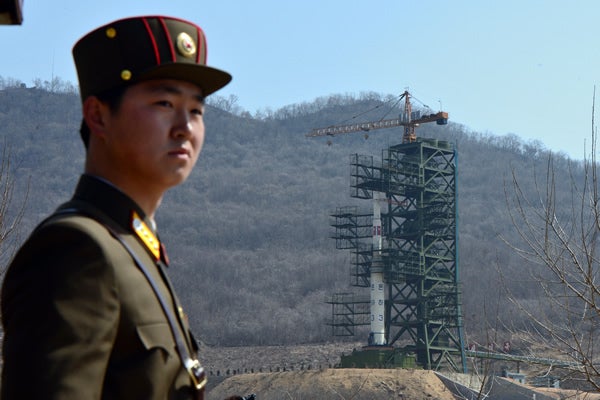The United States is planning to expand its ballistic missile defenses to Asia, according to The Wall Street Journal (WSJ). This is a welcome initiative since the ballistic missile threat to U.S. allies in the region is growing. However, previous Obama Administration cuts to missile defense programs, draconian cuts to overall U.S. defense spending, and overseas political resistance could hinder the scope and effectiveness of the contemplated plan.
Details of the new missile defense initiative have not been disclosed, limiting technical analysis of the proposal. According to the article, the Administration is planning on deploying additional X-band radar in southern Japan and another in Southeast Asia. These radars would cue Aegis ballistic missile defense-capable ships and potential land-based interceptors in the region.
Building additional X-Band early-warning radars in Japan and Southeast Asia would augment allied capability to detect and intercept North Korean and Chinese missiles, particularly if they are integrated into a comprehensive regional network. X-Band radars can detect ballistic missiles early in their flight and provide precise tracking and discrimination information, which increases chances of the intercept. Ultimately, the best tracking and discrimination constellation is to have an additional sensor satellite constellation, like the Space Tracking and Surveillance System satellites that provide birth-to-death tracking of incoming ballistic threats.
Also unresolved in the plan is how to overcome South Korean resistance to integrating its limited missile defense system into a broader allied network due to cost and Chinese reaction concerns. Although the current Lee Myung-bak administration has been more willing than predecessors to discuss missile defense with Washington, it remains hesitant to going beyond its low-tier system of PAC-2 and SM-2 missiles.
It is important to keep in mind that the U.S. and its allies cannot defend themselves against North Korea without having a significant defense against China. When China demands the U.S. and others limit their defensive capabilities so they do not affect China, it is in fact demanding the U.S. and its allies leave themselves vulnerable to all missile powers, including North Korea.
The Department of Defense assesses PAC-2 and SM-2 missiles are inadequate for South Korean defenses. South Korea would be better served by deploying PAC-3 and SM-3 missiles and integrating the Korea Air and Missile Defense into the allied network. Additional U.S. Theater High Altitude Area Defense (THAAD) deployments in Asia would provide better capability against ballistic missiles in the terminal phase of flight, including a limited capability against long-range ballistic missiles.
The Heritage Foundation recommends deploying three THAAD batteries to Asia. These would augment ballistic missile defense capability as part of a layered ballistic missile defense architecture in the region. Japan’s four Kongo Class Destroyers are ballistic missile defense capable already.
The U.S. Navy is reportedly planning on increasing the number of its missile defense-capable ships to 36 by 2018, 60 percent of which are likely to be deployed to Asia and the Pacific. While the Administration is proposing to procure 397 SM-3 interceptors of all types by FY 2017, the U.S. should have at least 500 interceptors in its inventory by that time. This number is essential to keep the pace with the rapidly advancing ballistic missile threat.
Unfortunately, sequestration will make it all but impossible to pay for an expanded missile defense effort. In November, Secretary of Defense Leon Panetta stated that the European missile defense would be terminated if sequestration is not repealed. Because cuts are implemented across the board, other elements of the missile defense program would not be exempt. It is essential that the U.S. government prevent the sweeping cuts to the defense budget—without imposing new taxes. With the ballistic missile threat advancing, this is not the time to cut the U.S. missile defense program.
